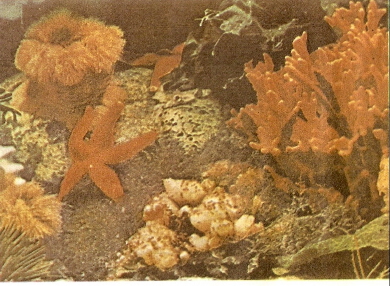
Invertebrates I |

Name: ______________________________________ Subject: _______________________ Date: _______
Write on the right side what is missing.
1. The animals
Animals are natural beings that are born, grow, develop , reproduce and die. For example: dog, horse, fly, snail and butterfly.
There are some animals that have bones and spine which are called vertebrates. For example: dog , rabbit, cow and lion.
Other animals do not have bones or spine and they are called invertebrates. For example: the dung beetle, snail, fly and others.
According to the relationship with humans, animals can be: domestic, those that live with men. For example: dog and cat. Wild, those that live in the countryside. For example: the dung beetle, the lion and the eagle.
2. Choose the correct answer: vertebrate or invertebrate
The fly is |
|
The hen is |
|
The horse is |
|
The snail is |
3. Indicate if they are domestic or wild animals:
The dog is |
|
The tiger is |
|
The cat is |
|
The lion is |

4. Types of invertebrate animals
Invertebrates are the simplest and smallest animals, but their diversity is greater than the vertebrates. They can be grouped into three classes:
- Unicellular Animals or protozoa: They live in both freshwater and saltwater and can be observed through the microscope. For example: amoebae (without membranes and it can deform) radiolaria (with skeleton and bones)
- Animals with radial symmetry, they have the body parts as a wheel, such as sponges, coelenterate (jellyfish) and echinoderms (starfish).
- Animals with long body, which usually have the head at one end, such as mollusks (snail), worms and arthropods (crab).
5. Indicate the correct answer: protozoa, animals with radial symmetry or animals with long body
The sponge |
|
The amoeba |
|
The worm |
|
The crab |
|
The starfish |
 |
6. Sponges The sponges are invertebrates that live in water. Their bodies are perforated by numerous pores which communicate with a central cavity. They live in colonies attached to the seabed. For example: common sponge and bath sponge. |
 |
7. Coelenterates Coelenterates often live at the bottom of waters forming colonies. they have radial tentacles and that is the reason why they looks like a flower. Colonies look like shrubs and flowering plants. The fixed coelenterates are called polyps and the swimmer coelenterates are called jellyfish . |
8. Select if they are sponges or coelenterates:
The polyp |
|
The common sponge |
|
The jellyfish |
|
The bath Sponge |
 |
9. Echinoderms |
 |
10. Mollusks The mollusks have soft body, head, visceral mass and locomotor organs with shape of tentacles like octopus or with muscular foot like snail. Others are protected by a shell as the mussel. |
11. Indicate if these animals are echinoderms or mollusks:
The sea Urchin |
|
The mussels |
|
The sea Cucumber |
|
The snail |
|
The octopus |
 |
12. Worms Worms have a cylindrical body, divided into numerous segments and legless. The taenia is the parasite of the pig and man, absorbing much food that they eat. The leech sucks the blood of other animals and man. The earthworm lives in the soil, feeds of organic rest and is beneficial to man and earth. The Ascaris lives in the small intestine mainly in children and it can cause injuries. |
13. Choose the correct answer: sponge, coelenterate, echinoderm, mollusk or worm
The mussels |
|
The leech |
|
The jellyfish |
|
The sponge |
|
The hedgehog |
|
The taenia |
|
The snail |
|
The starfish |
| Educational applications |
Natural sciences |
In Spanish | Interactive |
®Arturo Ramo García.-Record of intellectual property of Teruel (Spain)
No 141, of 29-IX-1999
Plaza Playa de Aro, 3, 1º DO 44002-TERUEL